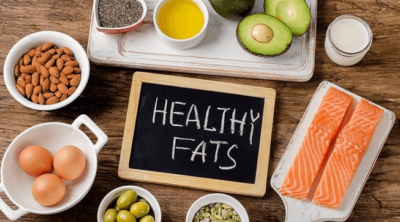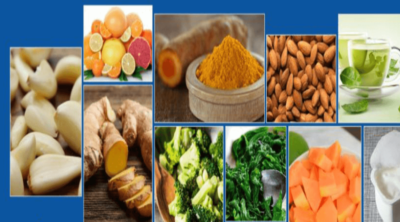
Popular in several European countries and the United States, liverwurst is a sausage made from a mixture of liver and pork. While pork liver is often the main ingredient, calf liver is also used in some countries. This NutriNeat write-up provides nutritional information, health benefits, and adverse effects associated with liverwurst.
A Word of Caution
100 grams of liverwurst provides 8308 mcg of vitamin A, which is way higher than the recommended daily allowance for vitamin A for adults (900 mcg for men and 700 mcg for women). So, consume it occasionally to lower the risk of vitamin A toxicity.
The term liverwurst is derived from the German word Leberwurst, which means liver sausage. The United States Department of Agriculture (USDA) places liverwurst in the category of cooked sausages and/or smoked sausages, which are sausages made of one or different kinds of chopped or ground meats that is seasoned, cooked and/or smoked. As the name suggests, liverwurst contains liver (pig’s liver or calf’s liver). It is made by mixing liver with meat, which could be in the form of pork, beef, chicken, or venison.
Liverwurst is often served on open sandwiches, with mustard or onion. It is consumed in North America and various European countries, where it might be known by different names. The taste and texture of liver sausages can vary, depending on the type of meat and spices that have been used. For instance, Braunschweiger is a type of liverwurst or liver sausage that is quite popular in Midwestern United States. It contains 40% pork liver or scalded beef liver, 30% scalded pork jowl, 20% lean pork trimmings, and 10% bacon ends and pieces. As per USDA guidelines, to be labeled as a Braunschweiger, the sausage must have at least 30% liver.
Nutritional Information about Liverwurst


According to the United States Department of Agriculture, 100 grams of liverwurst contains:
| Nutrients (Value per 100 g) | |
| Water | 52.10 g |
| Calories | 326 kcal |
| Protein | 14.10 g |
| Total lipid (fat) | 28.50 g |
| Carbohydrate | 2.20 g |
| Dietary fiber | 0.0 g |
| Minerals | |
| Calcium | 26 mg |
| Iron | 6.40 mg |
| Magnesium | 12 mg |
| Phosphorus | 230 mg |
| Potassium | 170 mg |
| Sodium | 860 mg |
| Zinc | 2.30 mg |
| Vitamins | |
| Vitamin C | 0.0 mg |
| Thiamin | 0.272 mg |
| Riboflavin | 1.030 mg |
| Niacin | 4.300 mg |
| Vitamin B6 | 0.190 mg |
| Folate | 30 µg |
| Vitamin B12 | 13.46 µg |
| Vitamin A, RAE | 8308 µg |
| Vitamin A, IU | 27,667 IU |
| Lipids | |
| Total Saturated Fatty Acids | 10.600 g |
| Total Monounsaturated Fatty Acids | 13.340 g |
| Total Polyunsaturated Fatty Acids | 2.600 g |
| Cholesterol | 158 mg |
Is Liverwurst Good for You?
There’s no denying the fact that liver sausage is a very rich source of several essential minerals and vitamins. According to the USDA, one slice of liverwurst (2.5 inches in diameter and ¼ inch thick) contains 59 calories, 2.54 g of protein, 5.13 g of total fat, 0.40 g of carbohydrate, and 9.38 g water. If consumed in moderation, it can certainly offer health benefits.
Rich Source of Protein
Termed as the building blocks of the body, proteins help repair the body tissues, and are also an important source of energy. Proteins also form antibodies that help fight infections. They also act as catalysts in chemical reactions that are essential for the healthy functioning of the human body. A hundred gram serving of this liver sausage provides 14.10 g of protein. The RDA for protein for men and women in the age group of 19-70 years is 56 g and 46 g, respectively. Thus, consumption of liverwurst can help in meeting the protein requirements of the body to some extent.
Low in Carbohydrates
Liverwurst is low in carbohydrates. A hundred gram serving of liverwurst provides 2.2 g of carbohydrates. Thus, it can be consumed by those who are following a weight loss diet. However, it is advisable to consume it occasionally, taking into account the large amount of fat and vitamin A it contains.
Good Source of Iron
The recommended daily allowance (the average daily dietary intake level that is sufficient to meet the nutrient requirement of nearly all healthy individuals in a group) of iron for men and women is 8 mg and 18 mg, respectively. Iron is essential for making hemoglobin, which is a protein that performs the vital function of transporting oxygen from the lungs to the tissues of the body. An iron deficiency can lead to anemia, which would have an adverse effect on one’s health. You can get 6.4 mg of iron from a hundred gram serving of liverwurst. Being a good source of iron, it will help in strengthening the immune system.
Rich in Vitamin B12
Liverwurst is also a rich source of vitamin B12, which helps in keeping the nervous system in a good condition. It also helps in the production of red blood cells. A serving of liverwurst provides about 13.46 µg of vitamin B12, which is five times more than the recommended daily allowance suggested by the Food and Nutrition Board of the Institute of Medicine.
High Fat Content
According to the dietary guidelines given by the World Health Organization or Food and Agricultural Organization, 55% of our daily energy should come from carbohydrates, 15% from proteins, and up to 30% should come from fats. In case of fats, less than 1% of the energy should come from trans fats, which are known to raise cholesterol levels. Less than 10% of the energy should come from saturated fatty acids, 6-10% should come from polyunsaturated fatty acids, 5-8% should be omega-6 fatty acids, whereas 1-2% should come from omega 3 fatty acids.Essential fatty acids such as omega 3 and omega 6 are essential for normal growth and development, and also help maintain blood cholesterol concentrations.
Good fats include polyunsaturated fatty acids (PUFA) and monounsaturated fatty acids (MUFA). Out of 326 calories in a hundred gram serving of liverwurst, 257 calories come from fat, 60 from protein, and 9 from carbohydrates. 100 grams of liverwurst provides 28.5 grams of fat, which can be broken down into 10.6 g of saturated fats, 13.340 g of total monounsaturated fats, 2.6 g of total polyunsaturated fats, and 158 g of cholesterol. Thus, it can contribute to high cholesterol levels. Therefore, it should not be made a part of your daily diet.
Rich in Vitamin A
The upper intake level of vitamin A suggested by the Institute of Medicine is 10,000 IU, whereas a hundred gram serving of liverwurst provides about 27,667 IU. Thus, it is advisable to cut down on the intake of liver sausage. One could consume small portions. It is best not to consume it on a daily basis. Though vitamin A is essential for keeping the eyes and skin healthy, excessive intake of liverwurst could make one susceptible to vitamin A toxicity, which could cause certain undesirable effects. Thus, owing to the large amounts of vitamin A in liverwurst, it is advisable to avoid it during pregnancy.
On a concluding note….
Liverwurst is rich in essential vitamins, minerals, and proteins, and has a low carbohydrate content, but it very rich in sodium and cholesterol. Thus, it could pose risks for individuals affected by hypertension. There’s also a risk of vitamin A toxicity in case of individuals who consume liverwurst on a daily basis. Thus, excessive consumption of liverwurst should be avoided.


